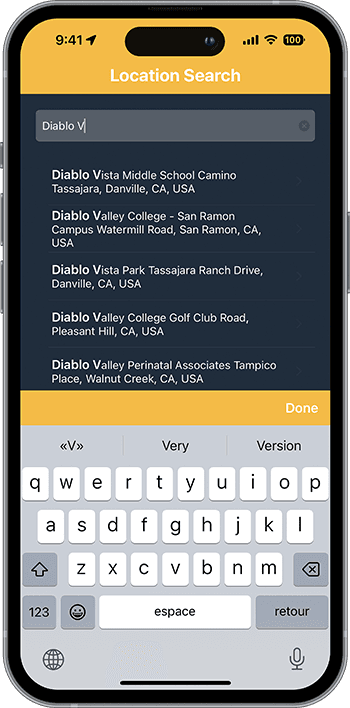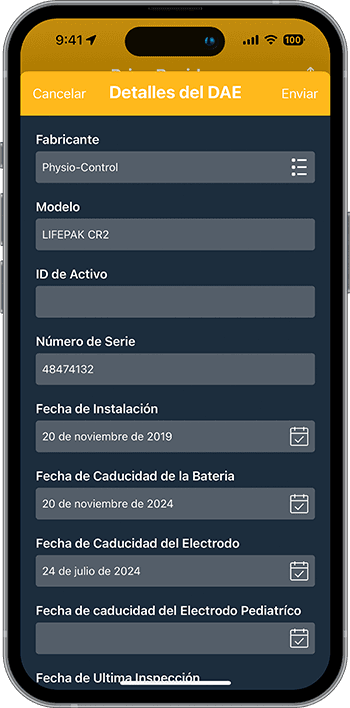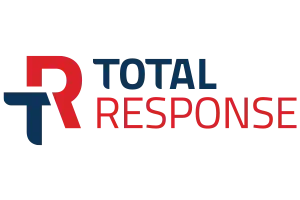Overview
Next Generation AED Management
PulsePoint AED is a powerful tool to build, manage and mobilize an emergency AED registry. Registered AEDs are accessible to emergency call takers and disclosed to those nearby during cardiac arrest events.
185,823
Alertable AEDs
224
AEDs Added
PulsePoint is a public, non-profit 501(c)3 organization that provides the emergency AED registry free of charge as part of its core mission to improve cardiac arrest survival.
Industry-wide support for all AED manufacturers and models.
FirstNet Certified™ for use with 9-1-1.
Download our easy to share factsheet.
Overview
Community Partnership
HELP BUILD YOUR COMMUNITY REGISTRY
PulsePoint AED is a simple yet sophisticated tool to record and share AED location information. You can help even before a life is in danger by easily identifying public access AEDs throughout your community. Direct citizen participation can also help create greater location awareness and mindfulness of the important role AEDs play in out-of-hospital cardiac arrest survival.
Once AEDs are identified, their locations can be viewed by anyone using the PulsePoint AED app–or the PulsePoint Respond app in PulsePoint connected communities.
Problems discovered with AEDs already in the registry, such as a closed business or an AED that is no longer present where shown, can easily be reported right in the app–helping to keep the registry accurate and reliable.
Watch this brief video to see just how easy it is to add an AED to the public AED registry.
Related: Top ways to improve your AED Registry.






Overview
AED Registry
DESIGNED TO PUT AEDS IN MOTION
- Once approved, AEDs are recommended to telecommunicators and PulsePoint responders for emergency use. Locations can be viewed by anyone using PulsePoint AED, PulsePoint Respond, or on an agency-hosted AED map.
- Predictive data entry simplifies and improves record accuracy, including open/closed hours based on linked public data sources.
- Manage and display collocated resources, including Bleeding Control Kits, Naloxone (Narcan®) and Epinephrine (EpiPen®).
- Support for consumable expiration reminders and manufacturer regulatory notices.
- Surveillance of AEDs allows for issue reporting and notifications to responsible parties.
- Watchlists allow users to curate a personalized selection of AEDs, such as devices they inspect and maintain.
- Systemwide support for 24/7 “always available” AEDs, including access code management for locked cabinets.
- Agency-authorized users can add and manage AED records using a phone, tablet or desktop.

Overview
AED-needed Alerts
When a cardiac arrest occurs near a registered AED, subscribers to that device receive an AED-needed alert requesting they deliver the AED to the reported location.
- Industry-wide support for all AED manufacturers and models.
- Notifications are based on AED proximity to the cardiac event–no personal location sharing.
- Receive AED-needed alerts on your phone, watch, or tablet – and simultaneously across all signed-in devices.
- Are you part of a neighborhood AED program or Workplace Safety Team? Multiple participants can subscribe to a single AED.
- Critical alert support can override the Do Not Disturb setting. Time sensitive and normal alerts can be managed using focus settings.
- View street-level imagery of where the AED is needed, including an interactive 360° daytime panorama of the destination address.
- Tap an AED icon for additional details, including device/cabinet image in the context of its surroundings, full location description, and accessibility information such as access codes and business/location hours.
- Responsible parties can independently conduct testing for individual subscribers.
- Utilizes PulsePoint’s existing network of ECC system integrations.

Japanese

French (Canada)

Spanish
Overview
Multi-Language Support
REACH EVERYONE IN YOUR COMMUNITY
If your agency serves a multilingual community, supporting the demography languages is critical for life-saving resources like AEDs.
PulsePoint AED detects the device's language settings and automatically displays information in the user's preferred language.
Overview
Cloud Management
Manage your AED registry from a single, cloud-based Admin console designed for larger screens and more complex tasks.
Although the PulsePoint AED Registry offers significant app-based management capabilities, some administrative tasks—such as filtering AED records in a spreadsheet-style grid, corresponding with site coordinators, or exporting registry data—may be better suited for the desktop. Learn more about our comprehensive browser-based AED management capabilities.
Telecommunicators
911-Initiated AED Response
POWERING TELECOMMUNICATORS WITH THE LOCATION OF EVERY AED
Emergency Communications Center (ECC) telecommunicators are a critical link in the cardiac arrest chain of survival. Similar to providing cardiopulmonary resuscitation instruction (T-CPR), equipping call takers with automated external defibrillator locations (T-AED) can improve outcomes.
STRATEGIC INTEGRATIONS WITH INDUSTRY LEADERS
The PulsePoint-hosted Emergency AED Registry is integrated with leading emergency medical dispatch (EMD), pre-arrival instruction, and tactical map vendors, including ProQA Paramount, APCO Intellicomm, PowerPhone Total Response, and RapidDeploy Radius. These strategic integrations allow telecommunicators to inform callers of the exact location of registered AEDs within familiar applications and workflows.

Watch a recent webinar recording hosted by the International Association of Fire Chiefs. This webinar demonstrates how to incorporate the Emergency AED Registry and AED-Needed Alerts into existing cardiac arrest protocols in your ECC.
DEPLOY WITH CONFIDENCE
PulsePoint AED is an end-to-end FirstNet Certified™ application. FirstNet Certified™ solutions must demonstrate 99.99% availability and pass independent 3rd party security, data privacy, and performance audits.





Embed
AED.new Website

SIMPLE URL TO SHARE WITH YOUR COMMUNITY
In addition to using the PulsePoint AED app, community members can also report AED locations on the easy-to-remember website, aed.new. Agencies receive submitted device information for review and verification just as they do from the app.
This form can be embedded within an agency website to offer a simple alternative collection method for community members looking to report an AED.
Embed
Website AED Location Map
EFFORTLESSLY SHARE COMMUNITY AED LOCATIONS
With a single HTML line, PulsePoint agencies can embed a live, interactive AED location map directly within their website. The data for these maps comes straight from the PulsePoint hosted registry, always reflecting the latest device information. Learn more here.
API
Third Party Registry Interfaces

Third-party interfaces allow CAD vendors, EMD protocol providers, AED manufacturers, and other partners to connect and add value to the registry.
PULSEPOINT AED REGISTRY API
The PulsePoint AED Registry API allows our partners, such as computer-aided dispatch vendors and emergency medical dispatch solution providers, to programmatically access AED information stored in the registry. While most AED registries are inaccessible to emergency telecommunicators during an emergency, the PulsePoint Registry API unlocks the lifesaving value of the registry data putting it to use when needed most.
PULSEPOINT AED READINESS API
The PulsePoint AED Registry Readiness API allows our partners, such as AED manufacturers and AED monitoring solution providers, to programmatically report readiness exemptions for devices stored in the registry. This resource proactively creates issue-specific maintenance tickets for individual AEDs typically based on unattended sensor data. These maintenance tickets, also known as Reported Issues, are surfaced within the standard administrative workflow of the registry including immediate push notifications to responsible parties.
PULSEPOINT AED REGISTRATION API
The PulsePoint AED Registration API allows foundation partners, such as AED manufacturers and medical direction and oversight programs, to create and update AED registry records programmatically. This allows third-party systems to efficiently report new AED installations and maintenance/inspection activities for compliance purposes and to share device locations for use during cardiac arrest events.





